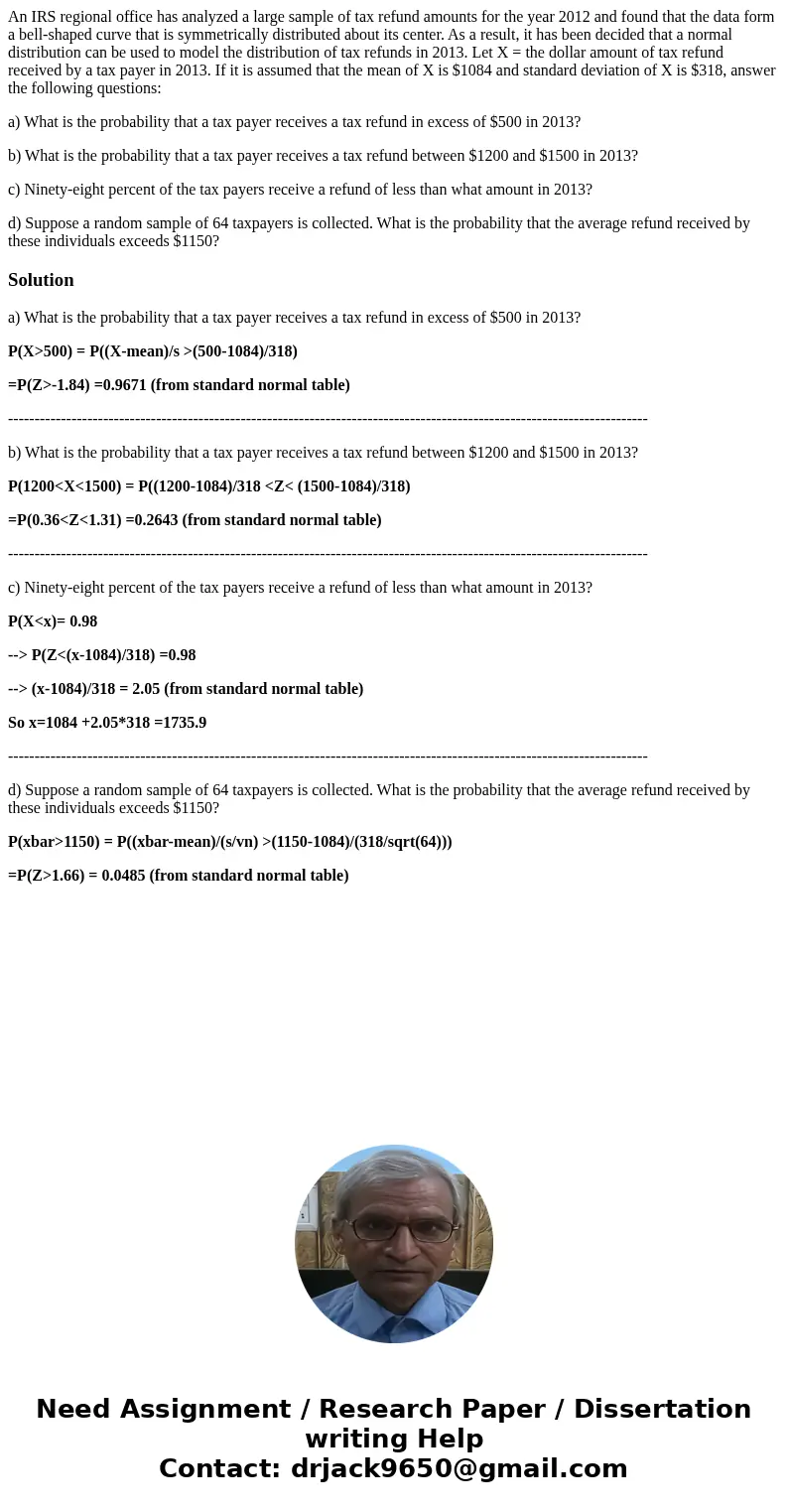An IRS regional office has analyzed a large sample of tax re
An IRS regional office has analyzed a large sample of tax refund amounts for the year 2012 and found that the data form a bell-shaped curve that is symmetrically distributed about its center. As a result, it has been decided that a normal distribution can be used to model the distribution of tax refunds in 2013. Let X = the dollar amount of tax refund received by a tax payer in 2013. If it is assumed that the mean of X is $1084 and standard deviation of X is $318, answer the following questions:
a) What is the probability that a tax payer receives a tax refund in excess of $500 in 2013?
b) What is the probability that a tax payer receives a tax refund between $1200 and $1500 in 2013?
c) Ninety-eight percent of the tax payers receive a refund of less than what amount in 2013?
d) Suppose a random sample of 64 taxpayers is collected. What is the probability that the average refund received by these individuals exceeds $1150?
Solution
a) What is the probability that a tax payer receives a tax refund in excess of $500 in 2013?
P(X>500) = P((X-mean)/s >(500-1084)/318)
=P(Z>-1.84) =0.9671 (from standard normal table)
-------------------------------------------------------------------------------------------------------------------------
b) What is the probability that a tax payer receives a tax refund between $1200 and $1500 in 2013?
P(1200<X<1500) = P((1200-1084)/318 <Z< (1500-1084)/318)
=P(0.36<Z<1.31) =0.2643 (from standard normal table)
-------------------------------------------------------------------------------------------------------------------------
c) Ninety-eight percent of the tax payers receive a refund of less than what amount in 2013?
P(X<x)= 0.98
--> P(Z<(x-1084)/318) =0.98
--> (x-1084)/318 = 2.05 (from standard normal table)
So x=1084 +2.05*318 =1735.9
-------------------------------------------------------------------------------------------------------------------------
d) Suppose a random sample of 64 taxpayers is collected. What is the probability that the average refund received by these individuals exceeds $1150?
P(xbar>1150) = P((xbar-mean)/(s/vn) >(1150-1084)/(318/sqrt(64)))
=P(Z>1.66) = 0.0485 (from standard normal table)

 Homework Sourse
Homework Sourse